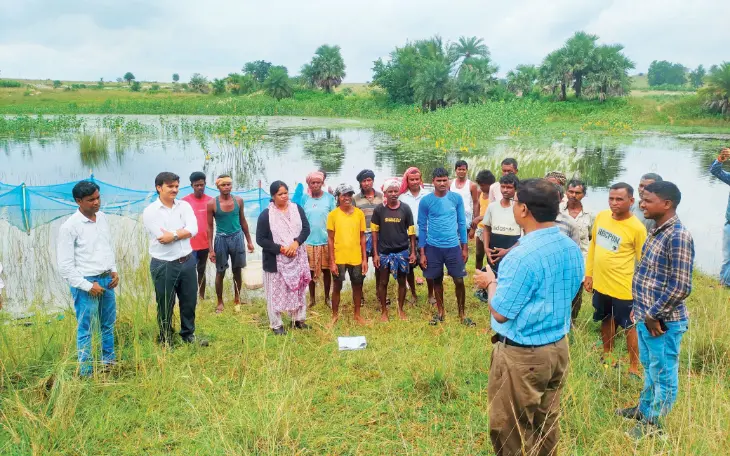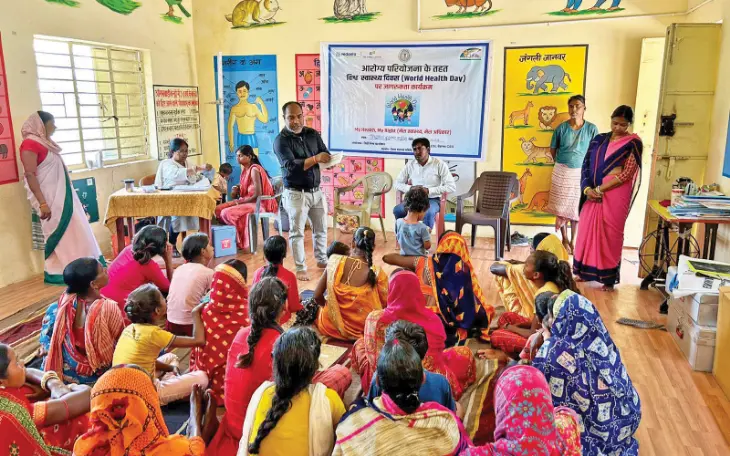Operational Review

ESL Steel Limited (ESL), located in Bokaro, Jharkhand, is an integrated steel plant with a design hot metal capacity of 3.5 MTPA and an operating capacity of 1.5 MTPA. It offers a diverse product portfolio including wire rods, rebars, ductile iron pipes, and pig iron, serving sectors such as construction, infrastructure, transport, and energy.
During FY 2024-25, ESL produced 1,427 kt of hot metal and 1,337 kt of saleable steel, down 3% and 4% Y-o-Y, respectively, due to planned shutdowns for debottlenecking and maintenance. During the year, ESL enhanced its billet production capacity from 1.2 MTPA to 1.4 MTPA by debottlenecking BOF converter heat size from 60 to 65 tonnes, supporting future growth and operational efficiency.
ESL Steel Limited recorded saleable production of 1,337 kt, down 4% Y-o-Y, aligned with the decline in hot metal output due to a planned plant shutdown for debottlenecking of the steel melting shop and major maintenance at the oxygen plant. Despite pressures on realisations and sales volumes, improved operational efficiencies and a decline in raw material costs –particularly coking coal – contributed to a reduction in cost of sales.
Our operational focus remains on enhancing the production mix towards high-margin, value-added products such as rebars, wire rods, and ductile iron pipes to strengthen profitability and market competitiveness.
On the regulatory front, the renewal of the Consent to Operate (CTO) for the Bokaro steel plant is under review. The Ministry of Environment, Forest and Climate Change (MoEF&CC) has requested the Jharkhand Forest Department to provide complete compliance details. In response, the state submitted a compliance report on 17 November 2023, highlighting progress and requesting reconsideration of the Stage I Forest Clearance revocation, seeking additional time to meet pending conditions – primarily related to Compensatory Afforestation (CA) land. ESL has completed the mandated 1:2 CA land transfer to the Forest Department. Subsequently, the State Government requested reconsideration through a letter dated 6 November 2024. However, MoEF&CC, in its letter dated 9 December 2024, informed the State Government of the revocation and advised appropriate action. The matter is currently sub judice in the Jharkhand High Court, which, considering ongoing discussions among the stakeholders, has adjourned the hearing to 11 April 2025.
Average sales realisation for the year stood at US$ 586, down 4% Y-o-Y, primarily due to lower production of value-added products following the steel melting shop shutdown for debottlenecking.
Cost for the year was US$ 540 per tonne, down 8% Y-o-Y, driven by lower coking coal prices, improved operational efficiencies, and reduced losses from iron ore mines.
Revenue for the year stood at ₹ 7,928 crore, down 4% Y-o-Y, primarily due to lower volumes and realisations. EBITDA increased to ₹ 522 crore in FY 2024-25 from ₹ 225 crore in FY 2023-24, driven by a decline in coking coal prices, improved operational performance, reduction in losses from mines and a gain from the monetisation of the oxygen plant in the first quarter of FY 2024-25.
We made steady progress in reducing our carbon footprint. GHG emission intensity improved marginally from 2.78 tCO2/tcs to 2.77 tCO2/tcs. Through the successful execution of key projects – including CFBC#2 burner modification, lateral fitting of HT capacitor banks, thermal insulation, and optimised idle running of equipment – we achieved total energy savings of 2.9 lakh GJ. The addition of five electric vehicles to our fleet further contributed to our decarbonisation efforts.
Our sustainability journey includes the commissioning of a 1.5 MW solar power plant, generating 1.75 million units of green energy annually and offsetting 1,500 tonnes of CO2 emissions. In total, over 40 energy-saving projects were implemented this year, resulting in a reduction of 60,000 tonnes of CO2 emissions.
We commissioned five Sewage Treatment Plants, increasing recycling capacity by 575 kl/day. We also revamped 4.5 km of firefighting pipelines to curb water loss and increased stormwater collection capacity from 3,400 to 4,000 m3/day.

As part of our commitment to environmental stewardship, we planted over 2,23,000 trees, enhancing local biodiversity, improving air quality, and contributing to a greener ecosystem.
We achieved 92% utilisation of high-volume, low-toxicity waste through better processing, innovative reuse strategies, and partnerships, reinforcing our focus on sustainable and responsible waste practices.
Safety remains a top priority, deeply embedded across all levels of operation. We are committed to creating a zero-harm workplace, ensuring the safety of our employees, business partners, and surrounding communities. This year, we strengthened our safety culture through targeted initiatives including the installation of tarpaulin stations, illuminated annunciation systems in hot metal handling cranes, traffic blinkers at intersections, and AI-based fatigue detection systems. We also implemented a health surveillance programme tailored to specific illness groups such as diabetes, hypertension, and obesity, enabling focussed and preventative care.
